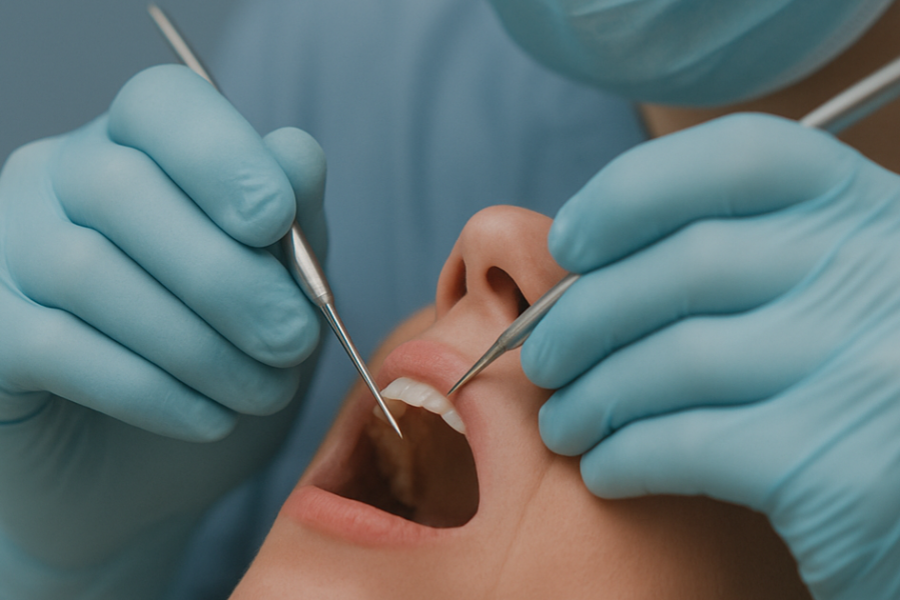As dental care and oral hygiene awareness are going viral around the world, root canal therapy safety remains a controversial topic for treatment. Regarding the importance of this key treatment, it’s time we addressed some frequent questions about root canal therapy: Is it safe? How does it benefit you? Or how can you have access to reliable services?
Now, to put your mind at ease, let’s explore whether this procedure is a risk worth avoiding or a reliable, safe solution for a stunning smile!

Root Canal Therapy Safety: Fears and Misconceptions
Root canals often frighten patients, since many have associated them with excruciating pain, troubling infections, or even critical health risks, such as cancer or heart disease! But where do these assumptions come from? Well, these fears go back to early 20th-century misconceptions, which were fueled by poor dental technology equipment and exaggerated stories that have lingered in popular culture.
Despite these common, false beliefs, modern dentistry has transformed root canal therapy into a safe and highly effective procedure to save decayed or traumatized teeth. Whether you’re experiencing tooth decay, pain, or researching root canal therapy safety, it’s essential to know the facts and rumors to approach your most suitable treatment with confidence.
The Safety of Root Canal Therapy
Root canal therapy safety is a cornerstone of its great acceptance. However, many patients may still be unaware or misinformed about the reliable advancements of this procedure.
How Modern Techniques Make Root Canals Safe
The evolution of endodontics has turned root canal therapy safety into a definite outcome!
Dentists now use:
- Rotary nickel-titanium instruments to clean canals with more efficiency.
- Digital radiography for real-time imaging with the least radiation exposure
- Electronic apex locators to measure canal length with sub-millimeter accuracy to reduce errors.
- Local anesthesia, often with sedation options like nitrous oxide for anxious patients, is used to create a pain-free experience.
- Biocompatible sealants like gutta-percha and advanced adhesive resins create a bacteria-proof barrier, and ultrasonic cleaning removes debris from canal systems.
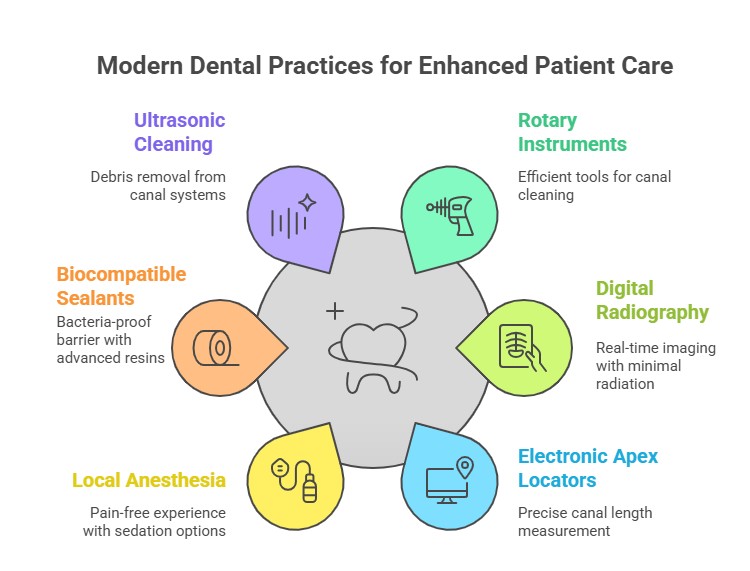
These proactive innovations, along with a significant focus on patient-centered care, have debunked historical concerns and made root canal safety more evident than ever.
Why Root Canal Therapy Is Commonly Recommended
Root canal is a first-line treatment choice when decay or injury reaches the pulp (the tooth’s nerve-rich core), which can lead to abscesses, bone loss, or systemic infections if ignored.
Root canal therapy includes removing the infected tissue, disinfecting the area, and sealing the canal to prevent the spread of infection to other teeth or the bloodstream. Moreover, root canals are under the Canadian Dental Care Plan coverage because they serve as a rescue treatment for your oral health.
With teledentistry on the rise and a growing focus on oral health, root canal therapy continues to be a widely accepted standard. The integration of remote consultations has made preventive dental services more accessible than ever by enabling patients to assess their needs online, choose between treatment options, and consult for their dental emergency.
Contact Us for Help!
Have questions about root canal therapy?
Book a consultation with an expert to discuss safety and your choice of treatment!
Common Health Concerns About Root Canal Therapy Safety
Despite its scientifically proven safety, misconceptions about root canal side effects still discourage or scare patients from seeking care.
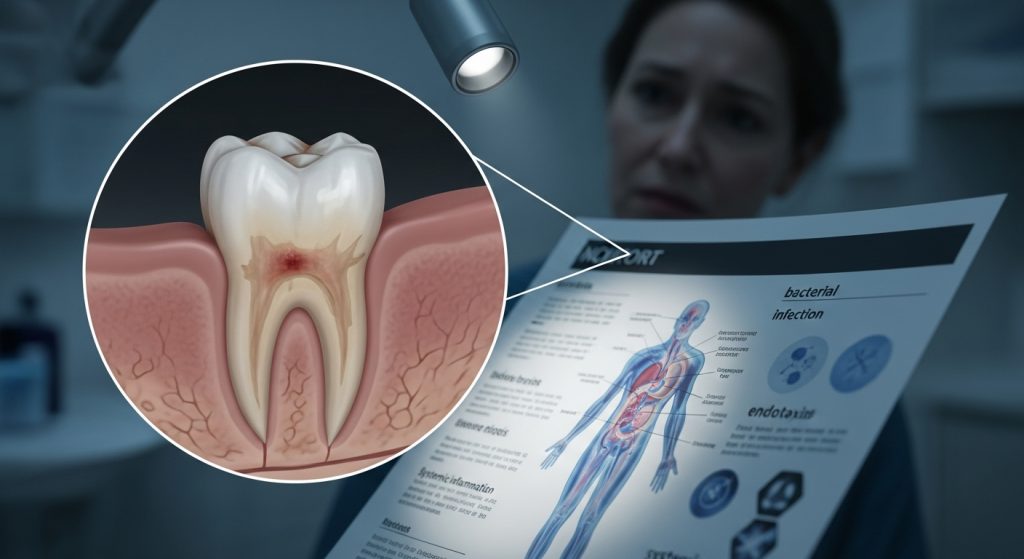
The Risk of Infection
One common fear is that root canals might cause or worsen infections! However, this procedure is designed to do the exact opposite! Root canal therapy involves removing diseased pulp, sterilizing the canal, and sealing it with biocompatible materials.
Post-treatment infections are rare, occurring in fewer than 5% of cases! They are usually related to pre-existing conditions, such as untreated gum disease or failure to follow aftercare instructions (including avoiding chewing on the treated tooth for a few days). Regular dental check-ups, personalized post-op care plans, and good oral hygiene further reduce the risk of infection into a minor and manageable mishap, increasing root canal therapy safety more than ever.
Concerns About Toxins or Bacteria
Another common misconception is that root canals leave behind toxins or bacteria, which can lead to chronic diseases. This misinformation is a result of the discredited “focal infection theory” of the 1920s, which basically stated that focal infections cause many chronic and systemic diseases.
Modern techniques, such as using operating microscopes and advanced irrigation, ensure complete bacterial elimination and confirm no link between properly treated root canals and systemic illnesses.
Long-Term Health Effects
There are also several outdated claims suggesting a relation between root canal therapy and heart disease or arthritis, making patients worry about long-term consequences. However, according to a recent PLOS One article, researchers have found no correlation between this procedure and systemic diseases, proving that root canals isolate and treat the affected area without systemic impact.
The Benefits of Root Canal Treatment
As a life-changing oral health procedure, root canal therapy offers significant advantages that treat and enhance your teeth’s wellness.
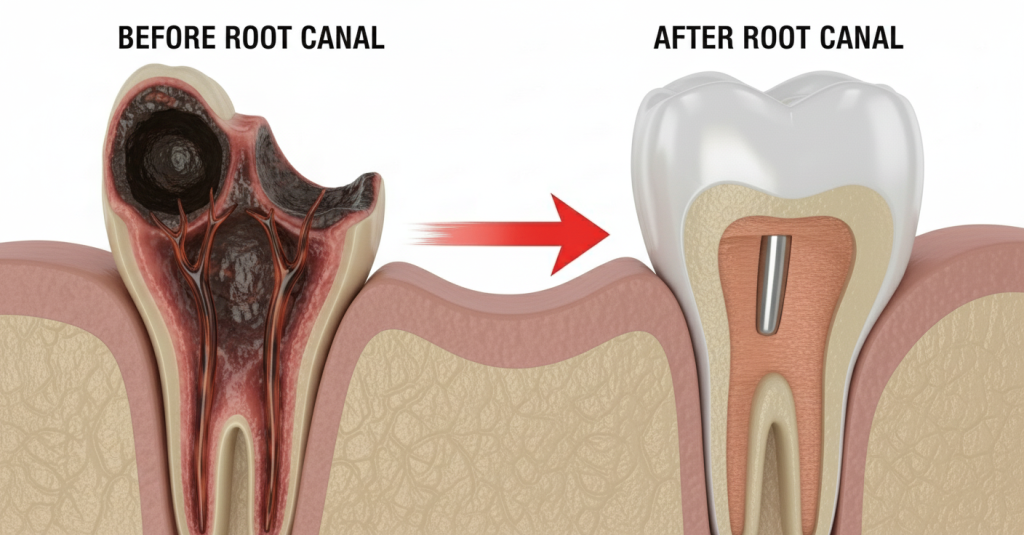
Prevent Tooth Extraction and Further Infection
Although root canal and tooth extraction are both rescue treatments, root canal therapy preserves your natural teeth and avoids the side effects of extraction, such as bone loss, shifting teeth, or the need for implants, which can cost thousands more.
This regenerative procedure prevents infection from spreading to adjacent teeth or the jawbone, aligning with patients who prioritize natural solutions over synthetic replacements.
Root Canal Therapy as a Safe Solution for Pain Relief
Pulp inflammation causes severe toothaches, which can irritate patients and limit their overall health and well-being. For this issue, root canal therapy, along with modern anesthetics and anti-inflammatory prescriptions, offers rapid relief within 48 hours, with complete recovery in a week.
This relatively quick remedy supports the growing demand for non-invasive pain management, a hot topic in health and wellness circles. Patients also benefit from reduced reliance on painkillers, supporting the trend toward holistic recovery options and natural post-op supplements.
The Root Canal Procedure: A Step-by-Step Overview
Despite the complex and detailed task of a properly done root canal procedure, the following table is a simplified, structured overview to demonstrate root canal therapy safety and what you should expect in your appointment:
| Step | Description |
| Initial Assessment and Anesthesia | The process begins with a thorough examination and local anesthesia to numb the tooth and the surrounding area. Sedation options may be offered if you experience extra anxiety. |
| Access Opening | Guided by digital X-rays, the dentist creates a small opening in your tooth’s crown using a dental drill to access the pulp chamber. |
| Pulp Removal | The dentist removes the infected or inflamed pulp carefully from the chamber and root canals. |
| Canal Cleaning and Shaping | The canals are cleaned of debris with antimicrobial irrigants and shaped with precision tools to prepare for filling. |
| Filling the Canals | The cleaned canals are filled with a biocompatible material, typically gutta-percha, and sealed with an adhesive resin to prevent bacterial infection. |
| Temporary or Permanent Restoration | The dentist can close the hole with a temporary filling. In your follow-up visit, they can place a permanent filling or crown to restore the tooth’s strength and function. |
| Follow-Up Care | Post-procedure check-ups and root canal aftercare, often supported by teledentistry for remote monitoring, ensure proper healing. |
Why It’s Important to Choose an Experienced Dentist!
Regarding everything we previously discussed, it’s only evident that this procedure is highly dependent on the dentist’s expertise to create a safe and successful outcome.
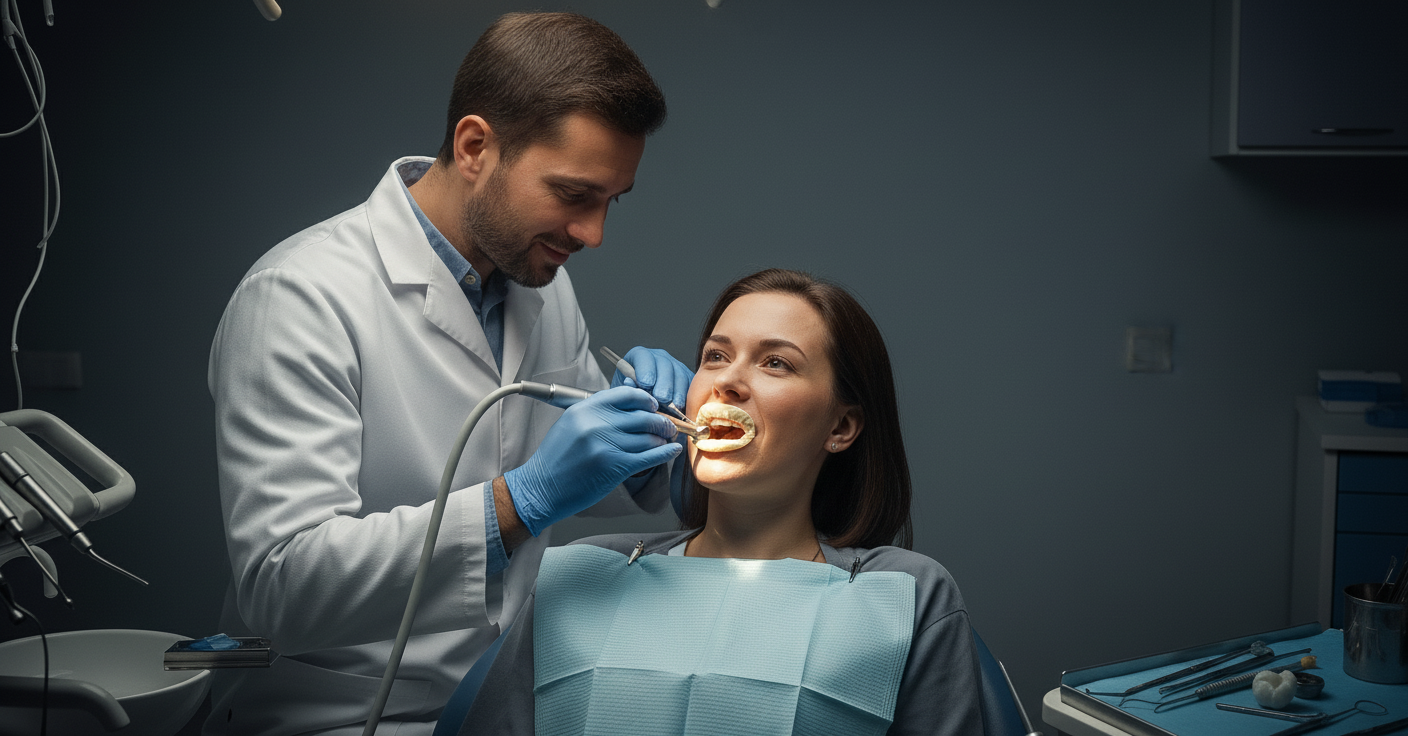
The Role of Skilled Professionals in Ensuring Safety
Skilled endodontists bring a level of precision and care that significantly enhances the root canal therapy safety:
- They utilize 3D cone-beam computed tomography (CBCT) to detect hidden or accessory canals that might be missed with traditional X-rays.
- They use dental loupes or operating microscopes that provide up to 20x magnification, allowing for meticulous cleaning and shaping of the canal system.
- These professionals are also trained to handle re-treatments or complex cases, such as teeth with calcified canals.
- Furthermore, their experience in managing stressed-out patients, often through teledentistry pre-consultations, improves outcomes by fostering trust and compliance.
For those seeking a specialist, consider consulting an endodontist in good clinics, or read patient reviews on platforms like Google as a deciding factor!
Root Canal Therapy Is a Safe Option for Many Patients!
Root canal therapy stands as a safe and evidence-backed solution to treat dental infections and preserve your natural smile.
Despite every outdated misconception of this procedure, root canal therapy safety evidently shows various benefits and allows for natural and tooth-friendly approaches.
Furthermore, modern trends like teledentistry and holistic care, along with oral health awareness, aim to reduce fears and encourage proactive treatment.
FAQ
-
Is root canal therapy safe for my overall health?
Yes, root canals are perfectly safe when performed correctly by a skilled dentist. Additionally, according to current research, this procedure does not impact your overall health.
-
Can a root canal cause infection or other health issues?
A properly done root canal eliminates infection risk. Any rare issues are usually due to pre-existing conditions rather than the procedure itself.
-
How common are complications after a root canal?
Complications are uncommon. According to WebMD, they occur in less than 5% of cases and are typically manageable with proper care and follow-up.
-
What should I do if I experience symptoms of infection after a root canal?
If you experience any symptoms of infection, such as swelling, pain, sore throat, or persistent rhinorrhea, contact your dentist promptly, as they can assess and treat any potential issues effectively.
What do you think about root canal therapy safety? Have you gone through the treatment or do you still have questions about the myths and facts? Share your thoughts in the comments and join the conversation.


